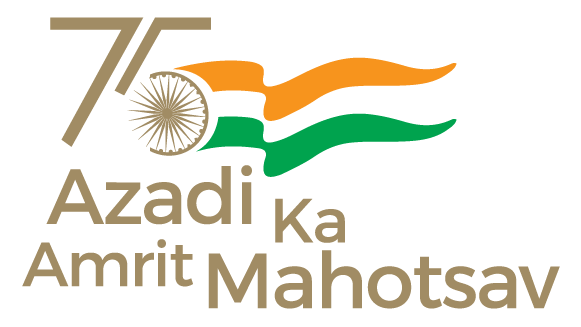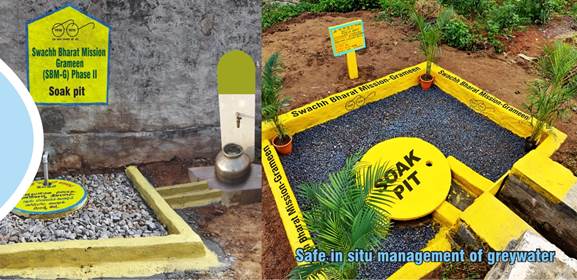
In yet another remarkable accomplishment, achieved during the ongoing ‘Swachhata Hi Seva’ Campaign, the Union Territory of Jammu & Kashmir has declared all its 6650 villages across 285 blocks in 20 Districts as ODF Plus Model. The achievement of ODF Plus Model for all villages in the UT is a significant milestone as it goes beyond constructing and use of toilets towards cleanliness by managing Grey water and Solid Waste in each village. For a village to achieve the status of ODF plus Model, it is required to pass through three stages of ODF Plus namely Aspiring, Rising and Model. When a village achieves a condition where it is visually clean with minimal litter and stagnant water, apart from solid and liquid waste management (SLWM) and adequate cleanliness awareness generation activities, it is declared as ODF plus Model.

In its attempt to make all villages ODF Plus Model, comprehensive plans were made, bringing all the stakeholders on board before execution. The Village Sanitation Saturation Plans (VSSP) for each village were made to ensure it has assets available for SLWM. Based on the plans, considerable SLWM infrastructure has been created under SBMG and MGNREGA. For Grey water management i.e., water generated from kitchen, bathing etc. soak pits, magic and leach pits have been developed at household and community level. 4,83,404 individual soak pits and 24,088 community soak pits have been constructed in J&K. Wherever kitchen gardens are available people have been motivated to dispose grey water through the kitchen gardens. For Biodegradable waste management individual and community compost pits have been constructed. 1,77,442 individual compost pits and 12621 community compost pits have been constructed either by the government or by people themselves in their households under MGNREGA. More and more of these assets are being constructed thereby making people accept and adopt of self-disposal of their organic waste, whether solid or liquid. People are being encouraged to segregate dry and wet waste and process wet waste in compost pits. 6509 waste collection and segregation sheds have been constructed for proper disposal of waste. 5523 number of Community Sanitary Complexes and 17,46,619 Individual Household toilets have also been constructed in J&K, since it embarked on the journey of ODF and ODF plus.

GOBARdhan which is Galvanising Organic Bio Agro Resources is a waste to wealth initiative where animal dung and kitchen waste is used to generate biogas/bio slurry. While two such projects are already functional in J&K, 18 more projects are in the final stages of completion. Door to Door collection of waste has been initiated in all the panchayats. Through involvement of locals, youth clubs, NGOs, and expert agencies, waste is being collected from households to be taken to segregation sheds where waste is segregated into various categories such as paper, wood, plastic etc. for its disposal. Some of these segregations shed are semi mechanized with bailers, shredders etc. User charges are being collected from the households, commercial and institutional establishments, both government and private. A financial model has been put in place for all the districts based on their waste collection agency, to ensure sustainability of the waste collection mechanism and also generate revenue for panchayats out of the waste disposal, thereby converting this waste to wealth.
900H.jpeg)
To cater to plastic waste in villages, Plastic Waste Management Units (PWMU) are being established in each block, which are at different stages of completion. The plastic in these centers would be cleaned, shredded, bailed etc. for its final disposal. The complete life cycle of the waste is properly managed.
VD31.jpeg)
For declaring a village as ODF plus besides the uploading of ground reporting with clear visual, videos of Gram Sabhas being conducted and declaring their villages as ODF Plus are all required to be uploaded on the portal, thereby making the entire process very transparent and public. The work done on the ground was captured and updated on the IMIS portal of SBM- G by the Blocks and Districts which facilitated in declaring J&K ODF Plus Model which is a remarkable accomplishment.
5Z1F.jpeg)
To enhance Capacity Building of officers, village level workers, elected representatives about Swachhata, Capacity Building programs across 285 blocks in 20 districts have been conducted at the panchayat level in which entire Rural Development Deoartment’s team and swachhagrahis have been trained to further train the people professionally for sustaining the goals of the mission.
Trainers have been trained to dispense information and provide orientations at the panchayat level. SBM(G) is not just a scheme for asset creation but is a behavioural change program which each household of the UT has to embrace for its success.
The focus of the departments on IEC through paintings, banners, awareness programs, plog runs, nukkadnataks is immense. Innovative ideas such as SwacchataKarwan, Swachhata Karwaan 2.0, Swachhata Internship, Swachh Yodha Pratiyogita, Swachhaton, Swachhata Bulletin and Swachhata Quiz have been launched to nudge behavioral change through cleanliness. The role of PRIs is pivotal in motivating people to understand the importance of Swachhata and help in making the everyday activities such as Door to Door collection of waste a success. Some elected representatives have done exceptional work in their respective panchayats for which they have received awards and appreciation at the UT and national level. Today every village of J&K so conspicuously carries messages of Swachhata on every public and private building.
Throughout Phase II of the Swachh Bharat Mission Grameen campaign, J&K has carried out many innovative campaigns and initiatives such as “Pink Toilets” to improve school attendance, Zero Landfill Shri Amarnath Ji Yatras, Give Polythene Get Gold campaign, pink societies to promote holistic development, Sarpanch Samvads, Swachhata internship, Swachhata quiz and Swachh Yodha Pratiyogita.
In another remarkable move to combat the sanitation challenges in rural areas of Union Territory of Jammu and Kashmir, the Directorate of Rural Sanitation, J&K announced the nomination of country’s highest gallantry awardee, the Param Var Chakra recipient Captain Bana Singh, a dedicated and decorated former soldier, as the ambassador for the “War Against Waste” initiative in Jammu & Kashmir.
Click Here to Read More: https://pib.gov.in/PressReleseDetail.aspx?PRID=1962357
As part of other new initiative aligning with the ongoing Swachhata Hi Seva campaign, the Directorate of Rural Sanitation in Jammu and Kashmir has introduced the ‘Swachhata Bulletin’. Its primary objective is to monitor and share daily updates on Information, Education, and Communication (IEC) activities conducted by districts under SHS 2023. It would create a platform wherein additional community members would come forward and would add to the cause of Swachh and Swasth Bharat. The bulletin can be used to collect feedback from stakeholders, aiding in program evaluation and improvement
Through consistent efforts, support of the people and elected representatives the department has achieved the status of ODF Plus Model. However, the biggest challenge shall be in sustaining the efforts that have been put to ensure that J&K becomes the cleanest UT of the country.
Sustainability begins with robust infrastructure. To ensure sustainability of ODF Plus model status of J&K in rural areas, department of rural development has to ensure consistent building and maintaining sanitation facilities, including toilets and waste management systems across districts, blocks and panchayats, paid usage of this massive infrastructure through its every citizen, to ensure accountability and responsibility and regular efforts towards behavior change so that filth and unhygienic behavior becomes unacceptable to everyone and Swachhata becomes a mass movement in a real sense. For this, engaging the communities, socio-cultural groups, PRIs, and more particularly close to 90000 women SHGs of J&K is pivotal.
Moreover, leveraging technology and innovation can significantly enhance sustainability. The use of smart sanitation solutions, remote monitoring, and data analytics can help in efficient resource allocation and timely maintenance.
Sustainability in ODF Plus is not a one-time achievement but a continuous journey. It requires a multi-dimensional approach encompassing infrastructure development, behavioral change, community engagement, financial sustainability, technology integration, and more. By embracing these principles, J&K can not only sustain its ODF Plus Model status but also maintain it for generations to come, ensuring a cleaner, healthier, and more sustainable future.
*******
Anubhav Singh

